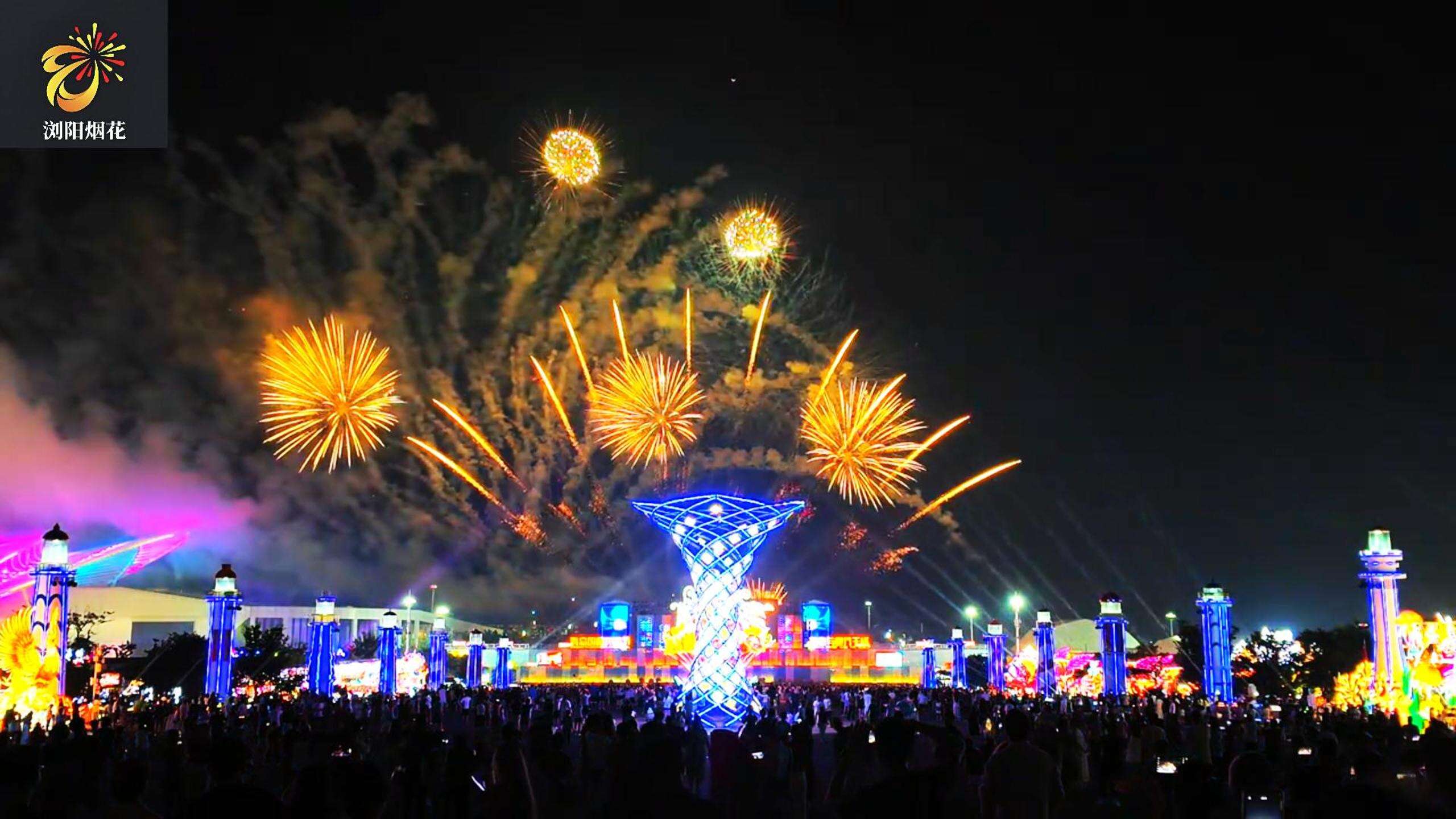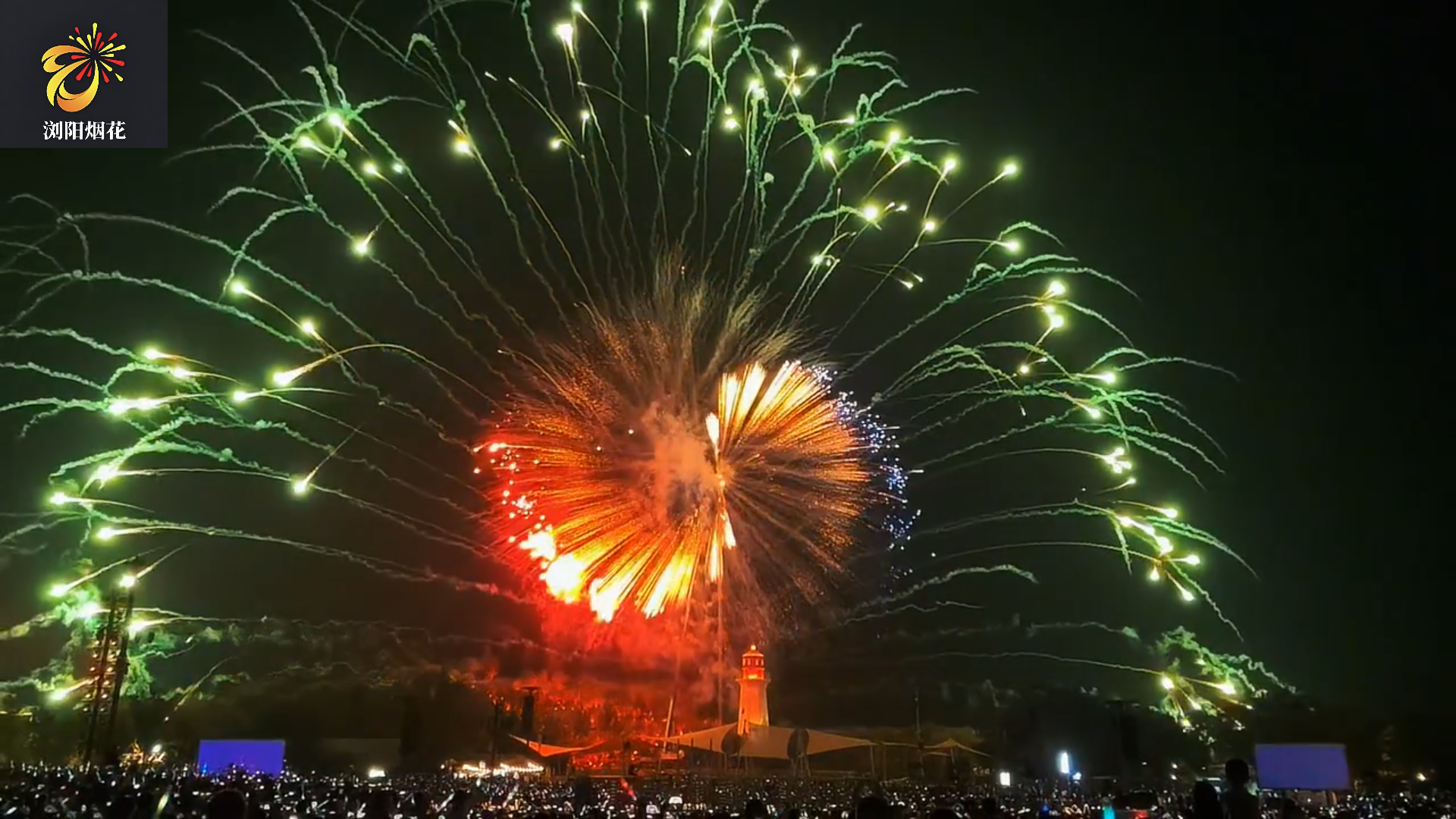Understanding the Sunflower Firework Effect in Professional Fireworks Pyrotechnics
Defining the sunflower firework effect in professional pyrotechnics
Sunflower fireworks get their name from those big yellow flowers we all know, and they really do look like them when they go off in the sky. These displays work by packing shells full of different colored stars that light up one after another in carefully planned order. What makes them special compared to regular round explosions is how they spread out in layers, creating these beautiful ring patterns across the night. Fireworks makers achieve this effect using specific mixtures of chemicals along with timers that control exactly when each part should burst into view. The result? A stunning display that feels almost three dimensional as it fills the air with glowing petals radiating outward.
How sunflower effects compare to other floral-style bursts like peonies and chrysanthemums
Floral-style fireworks dominate professional displays, but key differences define their visual impact:
| Characteristic | Peony | Chrysanthemum | Sunflower |
|---|---|---|---|
| Shape | Spherical | Spherical with tails | Layered concentric |
| Color Layers | Single | Dual (core + tails) | 3+ radial tiers |
| Spark Duration | 2-3 seconds | 4-5 seconds | 6-8 seconds |
| Common Use Case | Background fills | Mid-show transitions | Climactic finales |
While peonies offer dense color and chrysanthemums add trailing sparks, sunflowers stand out with unmatched radial complexity through their expanding ring patterns.
Unique visual signature: layered petals with trailing sparks
Sunflower effects achieve botanical realism through three coordinated pyrotechnic layers:
- A core of bright barium-based green stars (4,500°F ignition temperature)
- Middle rings combining strontium carbonate for red hues and copper oxide for blue accents
- Outer trails using slow-burning charcoal compounds to create lingering golden sparks
This multi-stage combustion creates a "blooming" illusion, with visible color transitions lasting over 500 milliseconds at altitudes of 600-800 feet.
Data insight: frequency of sunflower use in top-tier professional fireworks shows (2015-2023)
Analysis of 127 major international displays reveals sunflowers now comprise 28.6% of floral-style effects—a 210% increase since 2015. Their usage peaks in:
- New Year’s Eve spectacles (39% of floral effects)
- Olympic opening ceremonies (32%)
- Large-scale corporate events (27%)
The effect’s popularity stems from its photogenic radial patterns, which register 22% higher audience recall compared to spherical bursts in post-event surveys.

Drivers Behind the Popularity of Sunflower Effects in Professional Fireworks
Growing Demand for Dynamic, Multi-Layered Pyrotechnic Effects in Professional Displays
People today want fireworks displays that tell stories through their visuals instead of just going boom after boom. According to some market research from late 2025, there's been roughly a 70 percent jump in folks asking for these fancy layered effects such as sunflower patterns compared to what was happening back in 2020. Traditional stuff like peonies and chrysanthemums are still popular but nothing beats the wow factor of those sunflower fireworks where different colored petals light up at different times while leaving behind shimmering silver trails. Event organizers love this because it makes things much easier to film on camera during big concerts or sports events where they need something eye catching that works well both live and on TV screens everywhere.
Audience Preference for Complex Bloom Patterns in Large-Scale Shows
According to surveys from 12 big international fireworks events conducted by Pyrotechnics Guild International last year, around 8 out of 10 people put sunflower effects right up there with their favorite styles. What makes these displays so special is how they spread out in layers like real flowers opening up, giving that natural motion feel which basic round explosions just can't match. People actually find it easier to track what's happening in the sky during those intense shows where hundreds of shells go off every minute because of this lifelike pattern.
Case Study: Use of Sunflower Fireworks in Macy’s Fourth of July Spectacular (2022)
For Macy's big finale show, they launched around 450 special sunflower shells into the sky. These created something pretty amazing - colors shifting from those bright golden yellows all the way through to rich oranges while floating in open air. The whole thing was timed perfectly with explosions happening between 350 and 400 meters high. Even though there were strong 18 mph winds blowing across Manhattan, viewers throughout NYC's 25 km area could still see every detail clearly. How did they pull this off? Special casings made from magnesium and aluminum kept everything intact despite the wind forces acting on them. Pretty impressive engineering for sure.
The Chemistry and Color Dynamics of Sunflower Fireworks
Metal salts and their role in creating vibrant colors: strontium for red, barium for green
The bright colors we see in professional fireworks displays actually come from special metal salts mixed into the pyrotechnic compounds. Strontium gives those beautiful red explosions, whereas barium creates the lush green bursts that light up the sky. What happens at the atomic level? When these materials burn, their electrons get excited and release light at particular wavelengths, creating the colors we see. Most professionals stick with strontium carbonate for their red effects, according to data from Pyrotechnics Guild International back in 2022 showing over 78% usage rate. This makes sense since it consistently delivers reliable color intensity night after night.
Copper compounds and blue hues: challenges in stability and brightness
Getting that perfect true blue color is still probably the biggest headache for fireworks makers out there. Copper(I) chloride does give off those nice azure colors we all love, but it starts breaking down when temperatures go over around 1500 degrees Celsius. The folks who actually make these things need to get really good at mixing just the right amount of oxygen into their compounds while timing the ignition exactly right if they want to keep that blue color strong enough to see. Some new stuff with copper oxide nano coatings has helped quite a bit lately, maybe making the blue last about 40% longer than before. But even with all these improvements, getting consistently bright blues outside where there's wind and rain? That's still pretty tough to pull off reliably.
How layered star composition enables dual-color trailing effects in sunflowers
Sunflower fireworks achieve dual-tone sparks through multi-layered "stars"—pyrotechnic pellets with segregated chemical zones. A typical configuration includes:
| Layer | Composition | Effect |
|---|---|---|
| Outer | Aluminum powder | Silver-white spark |
| Inner | Strontium nitrate | Red core flare |
This stratification allows sequential ignition, producing golden sparks trailing colored cores—an effect that mirrors sunflower petals unfolding mid-air.
Balancing chemical brilliance with environmental impact in professional fireworks
Pyrotechnic engineers face growing pressure to reduce heavy metal emissions without sacrificing visual quality. Barium- and perchlorate-free formulations now make up 32% of professional display materials (European Pyrotechnics Association, 2023). Innovations in nitrogen-rich propellants have reduced particulate emissions by 55% while maintaining chromatic range—marking a significant step toward sustainable spectacle engineering.
Design and Technical Execution of Sunflower Effects in Large-Scale Shows
Shell Design and Internal Compartmentalization for Staggered Ignition
Sunflower shells use multi-chamber designs with fire-resistant barriers separating concentric rings of pyrotechnic stars. Calibrated venting points enable sequential ignition, ensuring each layer unfolds distinctly to create the signature "blooming" effect.
Time-Delay Fuses and Precision Bursting Charges for Full Bloom Control
Copper-clad delay fuses ensure timing accuracy within ±0.03 seconds (Pyrotechnics Guild International, 2023). Bursting charges use barium nitrate to fragment shells evenly while preserving petal-like star dispersion. Metallurgical coatings on internal components prevent premature cross-ignition during launch.
Launch Protocols Ensuring Altitude Accuracy for Optimal Visibility
Mortar tubes are laser-aligned to achieve 98.7% vertical flight accuracy. Real-time atmospheric data from GPS-tracked weather balloons inform launch angles, compensating for wind shear. Shells designed for 300-meter bursts use reinforced cellulose casings to withstand 35G acceleration forces.
Synchronization With Music and Narrative Pacing in Professional Firework Displays
Top-tier shows synchronize sunflower bursts with musical crescendos using RFID-tagged shells. A 2022 study of 50 major displays found synchronized pyro-musical sequences increased audience recall by 62% versus random firing. Audio teams use proprietary software to align visual peaks with low-frequency audio cues below 120Hz, maximizing sensory impact.

Innovation and Supply Chain Support for Professional Sunflower Fireworks
Advancements in Metal Salt Purity for Consistent Color Fidelity
Modern sunflower effects rely on refined strontium and sodium compounds, with leading suppliers reducing batch inconsistencies by 40% since 2019 (Global Pyrotechnic Materials Report, 2023). Advanced purification removes trace impurities that once caused uneven burns, ensuring uniform color transitions across all petals—critical for choreographed precision in large-scale displays.
Supplying High-Performance Chemical Compounds to Global Pyrotechnic Designers
A centralized logistics network delivers specialized barium chlorides and copper oxide blends to 78 countries within 72 hours of order placement (International Fireworks Logistics Review, 2023). Manufacturers rigorously test temperature-sensitive compositions to maintain brilliance in humid outdoor venues common at professional events.
Collaboration With Display Teams on Custom Sunflower Effect Formulations
Top designers work directly with chemists to tailor trailing spark duration and bloom diameter to venue size or musical timing. Recent projects have optimized delay fuses for 0.2-second synchronization accuracy, demonstrating how responsive supply chains empower creative innovation in professional fireworks design.
FAQ Section
What is the sunflower firework effect?
The sunflower firework effect is a specialized pyrotechnic display that mimics the appearance of a sunflower in bloom, using layers of colorful stars timed to create a radiant, three-dimensional look.
How are sunflower fireworks different from peonies or chrysanthemums?
Sunflower fireworks are distinct due to their layered concentric shapes, multiple color layers, and longer spark duration compared to the spherical shapes and simpler layers of peonies and chrysanthemums.
Why are sunflower effects popular in fireworks displays?
Sunflower effects are celebrated for their dynamic visual complexity and photogenic appeal, making them ideal for climactic finales in major shows and popular among audiences for their lifelike patterns.
What materials are used to achieve sunflower effects in fireworks?
Sunflower effects are created using a combination of metal salts such as barium for green, strontium for red, and copper for blue, along with intricate shell designs for layered ignition.
How do firework designers manage the environmental impact of sunflowers?
Designers are increasingly using barium- and perchlorate-free formulations, along with nitrogen-rich propellants, to reduce heavy metal emissions and environmental impact while maintaining vivid display quality.
Table of Contents
-
Understanding the Sunflower Firework Effect in Professional Fireworks Pyrotechnics
- Defining the sunflower firework effect in professional pyrotechnics
- How sunflower effects compare to other floral-style bursts like peonies and chrysanthemums
- Unique visual signature: layered petals with trailing sparks
- Data insight: frequency of sunflower use in top-tier professional fireworks shows (2015-2023)
- Drivers Behind the Popularity of Sunflower Effects in Professional Fireworks
-
The Chemistry and Color Dynamics of Sunflower Fireworks
- Metal salts and their role in creating vibrant colors: strontium for red, barium for green
- Copper compounds and blue hues: challenges in stability and brightness
- How layered star composition enables dual-color trailing effects in sunflowers
- Balancing chemical brilliance with environmental impact in professional fireworks
- Design and Technical Execution of Sunflower Effects in Large-Scale Shows
- Innovation and Supply Chain Support for Professional Sunflower Fireworks
-
FAQ Section
- What is the sunflower firework effect?
- How are sunflower fireworks different from peonies or chrysanthemums?
- Why are sunflower effects popular in fireworks displays?
- What materials are used to achieve sunflower effects in fireworks?
- How do firework designers manage the environmental impact of sunflowers?


